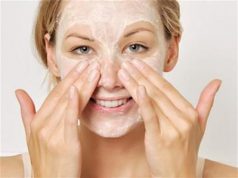Introduction
Sunlight is essential for life and plays a crucial role in overall well-being, including the synthesis of vitamin D and the upliftment of mood. However, for individuals with sensitive skin, sun exposure can present significant challenges. Managing sun exposure for sensitive skin requires a nuanced understanding of the sun’s effects, the risks associated with UV radiation, and the importance of employing effective sun protection measures to maintain skin health. This comprehensive guide delves into the intricacies of sunlight and sensitive skin, emphasizing the significance of smart sun protection and the impact of UV radiation on sensitive skin.
Understanding Sensitive Skin and Sun Sensitivity
Sensitive skin is characterized by its heightened reactivity to various stimuli, including sunlight. Common symptoms of sun sensitivity in individuals with sensitive skin include redness, itching, burning, and an increased risk of sunburn. This heightened reactivity is often due to an impaired skin barrier and a predisposition to inflammatory responses, making individuals with sensitive skin more susceptible to the adverse effects of UV radiation. Understanding the interplay between sunlight and sensitive skin is vital in formulating an effective approach to sun protection.
The Impact of UV Radiation on Sensitive Skin
Ultraviolet (UV) radiation, comprising UVA and UVB rays, poses a significant risk to the skin, particularly for individuals with sensitive skin. UVA rays can penetrate deep into the skin, contributing to premature aging, while UVB rays primarily affect the skin’s upper layers, leading to sunburn. Both types of UV radiation can exacerbate sensitivity, trigger inflammation, and contribute to long-term skin damage. For individuals with conditions such as rosacea, eczema, or dermatitis, UV radiation can also exacerbate existing symptoms, underscoring the importance of diligent sun protection for sensitive skin.
The Importance of Daily Sun Protection for Sensitive Skin
Establishing a daily sun protection routine is paramount for individuals with sensitive skin. Sun exposure can occur even on cloudy days or through windows, and as such, consistent sun protection remains crucial. Incorporating broad-spectrum sunscreen as part of a daily skincare regimen helps shield sensitive skin from the cumulative effects of UV radiation, minimizing the risk of sun damage, premature aging, and exacerbation of sensitivity-related symptoms. Sun protection should be an integral part of an individual’s skincare routine, woven seamlessly into daily habits to ensure consistent coverage.
Effective Sun Protection Measures for Sensitive Skin
Effective sun protection for sensitive skin extends beyond sunscreen application and encompasses a holistic approach. In addition to applying a broad-spectrum sunscreen with an SPF of 30 or higher, individuals should also seek shade during peak sun hours, wear protective clothing, such as wide-brimmed hats and sunglasses, and utilize umbrellas or sun-protective clothing when spending extended periods outdoors. Employing a combination of sun protection measures ensures comprehensive coverage and minimizes direct sun exposure, particularly during times of heightened UV intensity.
Choosing the Right Sunscreen for Sensitive Skin
When selecting a sunscreen for sensitive skin, several factors should be considered to ensure compatibility and effectiveness. Opt for sunscreens labeled “broad-spectrum,” signifying protection against both UVA and UVB rays. Additionally, choosing a formulation that is specifically designed for sensitive skin, free from fragrances, harsh chemicals, and potential irritants, is vital. Mineral sunscreens containing zinc oxide or titanium dioxide are often well-tolerated by sensitive skin and provide effective broad-spectrum protection without commonly associated irritants found in chemical sunscreens.
The Role of Physical Sunscreens for Sensitive Skin
Physical sunscreens, also known as mineral sunscreens, are a favorable choice for individuals with sensitive skin due to their gentle, non-irritating nature. These sunscreens work by creating a physical barrier on the skin that reflects and scatters UV radiation before it can penetrate the skin, offering effective protection without the need for potentially sensitizing chemicals. Physical sunscreens containing zinc oxide or titanium dioxide are recommended for sensitive skin, providing stable and reliable sun protection while minimizing the risk of adverse reactions.
Understanding SPF and Its Application for Sensitive Skin
Sun Protection Factor (SPF) measures a sunscreen’s ability to protect the skin from UVB rays, which primarily cause sunburn. For individuals with sensitive skin, choosing a broad-spectrum sunscreen with an SPF of 30 or higher is recommended. This level of protection helps shield against both UVA and UVB rays, providing reliable coverage to minimize the risk of sun damage and sensitivities. It’s essential to apply sunscreen generously and reapply at regular intervals, especially after swimming, sweating, or extended sun exposure, to ensure continuous protection.
The Impact of Sun Exposure on Skin Aging and Sensitivity
Prolonged or excessive sun exposure contributes to premature aging and exacerbates sensitivity-related symptoms for individuals with sensitive skin. UV radiation accelerates the breakdown of collagen and elastin, leading to the development of fine lines, wrinkles, and sagging, while also worsening issues such as redness, itchiness, and dryness. Minimizing sun exposure and employing effective sun protection measures are pivotal in mitigating the impact of UV radiation on skin aging and reducing the risk of exacerbating sensitive skin symptoms.
The Role of Sun Protection in Sensitive Skin Conditions
For individuals with specific skin conditions such as rosacea, eczema, or psoriasis, sun protection plays a critical role in managing symptoms and preventing flare-ups. UV radiation can trigger inflammation and worsen existing skin conditions, making diligent sun protection essential for minimizing the risk of aggravating symptoms. Individuals with these conditions should be particularly attentive to UV exposure, incorporating a comprehensive sun protection regimen to mitigate the impact of sunlight on their skin and maintain overall skin health.
The Importance of Year-Round Sun Protection for Sensitive Skin
Consistent, year-round sun protection is imperative for individuals with sensitive skin, regardless of the season. While UVB radiation is more intense in the summer months, UVA radiation remains constant throughout the year and can penetrate clouds and glass, leading to cumulative sun damage. Employing sun protection measures on a daily basis, even during winter or overcast days, is vital for maintaining skin health and preventing the onset of sensitivity-related symptoms and long-term sun damage.
Smart Sun Protection Practices: Seeking Shade and Protective Clothing
In addition to sunscreen application, seeking shade during peak sun hours and wearing protective clothing are essential components of a smart sun protection regimen for sensitive skin. When spending time outdoors, particularly between 10 a.m. and 4 p.m. when UV radiation is most intense, seeking shaded areas and taking breaks indoors reduces direct sun exposure, minimizing the risk of UV-related skin damage. Wearing lightweight, sun-protective clothing that covers the arms and legs, along with broad-brimmed hats and UV-protective sunglasses, provides added defense against UV radiation.
Balancing Sun Exposure and Vitamin D Synthesis for Sensitive Skin
Balancing the need for adequate sun exposure to facilitate vitamin D synthesis with the importance of sun protection for sensitive skin requires thoughtful consideration. Individuals with sensitive skin may be more cautious about sun exposure, considering the potential risks associated with UV radiation. It’s important to strike a balance by seeking brief, controlled sun exposure, particularly during non-peak hours, to optimize vitamin D synthesis while employing diligent sun protection measures to minimize potential adverse effects on sensitive skin.
Consulting a Dermatologist for Personalized Sun Protection Recommendations
For individuals with specific concerns regarding sun protection and sensitive skin, seeking guidance from a dermatologist is advisable. These specialists can provide personalized recommendations, assess individual sensitivities, and offer insights into effective sun protection measures tailored to sensitive skin. Additionally, they can address concerns related to sun-related skin conditions, formulate comprehensive sun protection plans, and provide guidance on selecting sunscreen and other protective measures aligned with individual skin needs.
Conclusion
Sunlight poses both benefits and risks for sensitive skin, making smart sun protection an essential aspect of skincare for individuals with heightened skin sensitivity. By understanding the impact of UV radiation on sensitive skin and the significance of effective sun protection measures, individuals can cultivate habits and routines that prioritize skin health and well-being. Embracing smart sun protection practices, such as consistent sunscreen application, seeking shade, and wearing protective clothing, fuels a proactive approach to mitigating sun-related risks while promoting overall skin comfort and resilience for individuals with sensitive skin.





